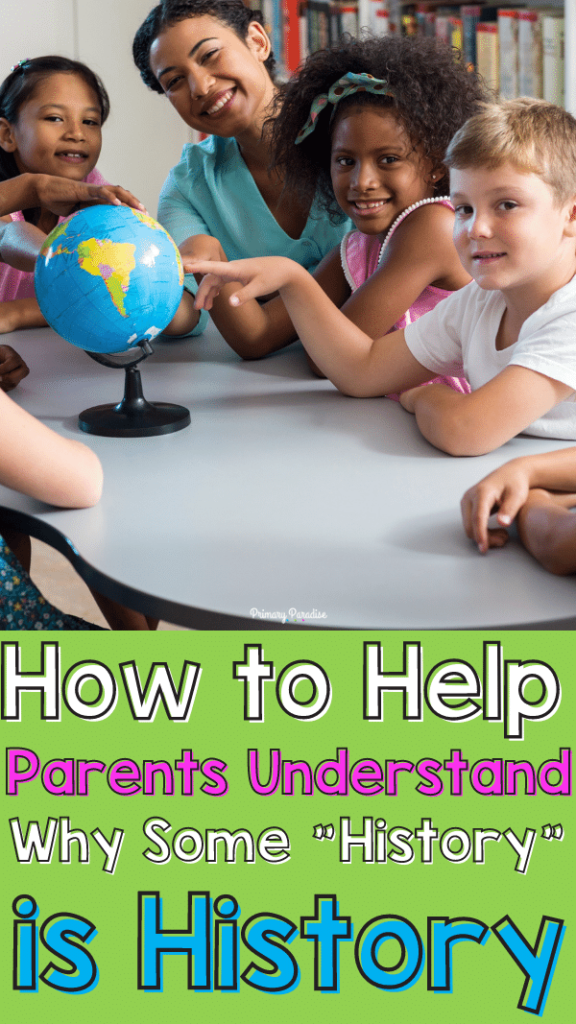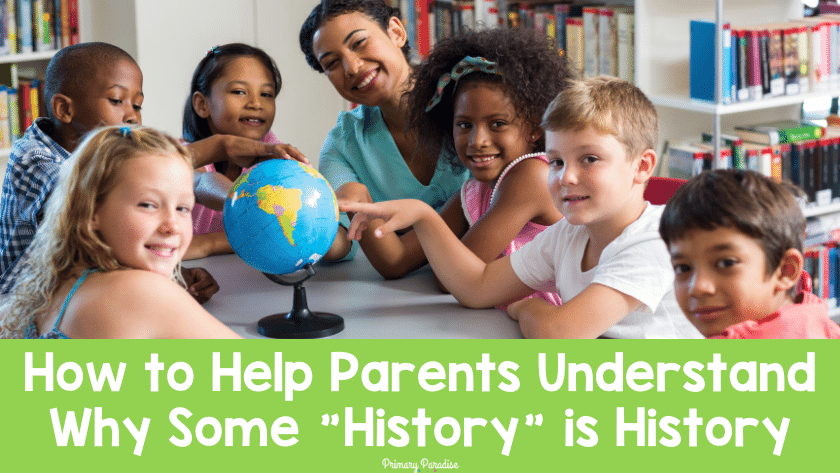To many parents, it might feel like history is being erased and changed. Many lessons and activities they loved and enjoyed are no longer taught: Columbus discovering America, Thanksgiving feasts reenacting the first Thanksgiving, and Martin Luther King Jr. “fixing” all racial discord in America. Here are 5 reasons we need to help parents understand why the way we teach history needs to change, and 3 ways to help get parents on board.
5 Reasons We Need to Change How We Teach History
The narrative we learned was not accurate
The first reason we need to rethink how we’ve taught social studies in the past and make a change is simple. Much of what adults were taught in school was inaccurate. Columbus might have sailed the ocean blue… but he did not land in American. In fact, he landed in what is now the Bahamas. If we want our children to have a firm understand of the world, we need to start by sharing accurate information.
Who write the history matters
If the winner writes the history, they’re always going to paint themselves in a favorable light. Most history has been written by white men, which means that, in addition to the narrative not always being accurate, there’s also a lot that hasn’t been said. In order to understand the full picture of the past, it’s important to recognize that who has written the history in the past, what voices and narratives have been shared, matters.
Black, Brown, and Indigenous peoples have been left out of the narrative
For far too long, marginalized groups have been left out of the narratives in what we teach in social studies. Either their contributions are erased, their struggles are minimalized, or they are presented as caricatures, rather than humans. Today, more and more people are recognizing the importance of listening to the voices of marginalized groups, celebrating their culture, and letting go of false narratives. This is am important step for our future. If we want to give our children an accurate understanding of the world, we need to start listening to all groups of people and including their culture and history in the narrative.
We do a disservice by glossing over the negative
The say goes “Those who do not learn history are bound to repeat it”. I would change that to Those who do not learn true history are bound to repeat it. We do our students a disservice in the present by pretending the atrocities of the past didn’t happen. It is necessary for kids to know that important historical figures were flawed. It’s important to know that many people’s stories were not preserved because they were viewed as less than. It’s imperative for them to know that the fight for civil rights is still going on today. Little kids can handle big things. Of course, we want to teach them in an age appropriate way, but kids can handle a lot more than we give them credit for.
If we know better, we need to do better
Lastly, if we don’t change the way we teach history, if we don’t let go of the false, white washed version we’re comfortable with, we can not make progress. We need to teach our students the truth so that they can work to do better. Knowledge is power, and the understanding of the past is the key to a brighter present and future.
What do we do with this knowledge?
If you’re still reading this, bravo. I’m guessing that means you are open to ensuring your students learn accurate history. So, how do we share these facts with parents? How do we help them understand why this is so important? Here are three things you can do to help them understand.
1. Make sure your administration is on board
First, if you don’t know if your administration is on board with making sure students learn accurate history, schedule a meeting and talk to them about it. Encourage them to read Lies My Teacher Told Me if they seem skeptical. You could even suggest a school wide book club of the book. It’s helpful to know your admins will back you up.
2. Be honest with your parents
At the beginning of the year, send a letter, email, or have a discussion with your parents about your intention to teach history that is accurate, not harmful, and will help students understand the past so they can make the present and future brighter. If you want, you can give parents an outline of what they will be learning, and share false narratives that you plan to avoid. Although there might be some pushback, letting parents know ahead of time should help them get more comfortable with the idea. Plus, if you have your administration on board, you can always refer parents to them.
3. Educate yourself and use quality social studies resources
First, take the time to educate yourself so you can create accurate and impactful history lessons. In addition to Lies My Teacher Told Me, Unpack Your Impact by Naomi O’Brien and LaNesha Tabb is a great book to read.
Additionally, it’s important to use quality resources to teach social studies. When parents see their children learning and excited to learn, they are more likely to get on board. Naomi and LaNesha, who are elementary teachers themselves, also have a fantastic line of resources on a variety of history and social studies topics. They’re a great place to start if you need help knowing where to begin.
The bottom line is that the way we teach history is changing. And, it must change, so we aren’t doomed to repeat it.
Keep reading and learning about how to support parents:
- Free Reading Guide for Parents
- Free Math Guide for Parents
- Free Phonics Guide for Parents
- Free Science Guide for Parents
- What to Include in a Parent Newsletter
- Top 5 Ways to Send a Parent Newsletter




